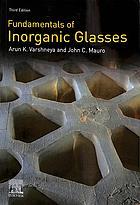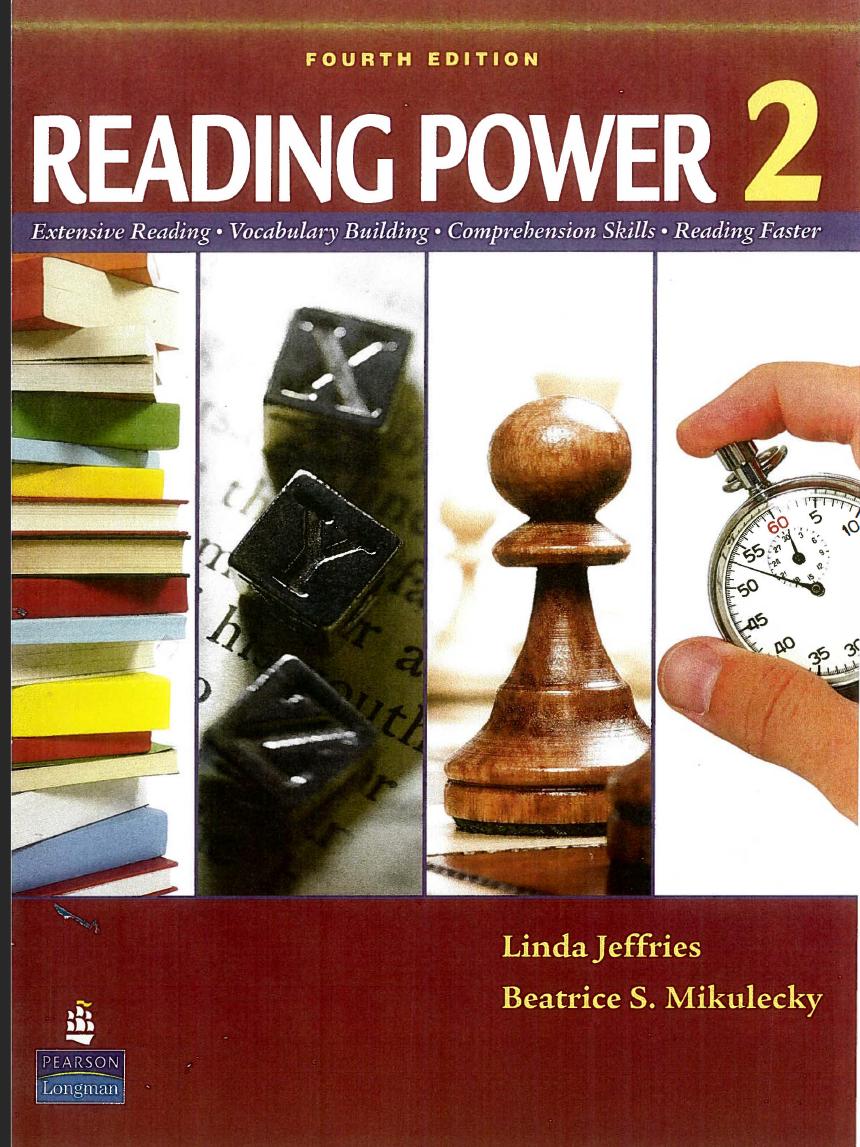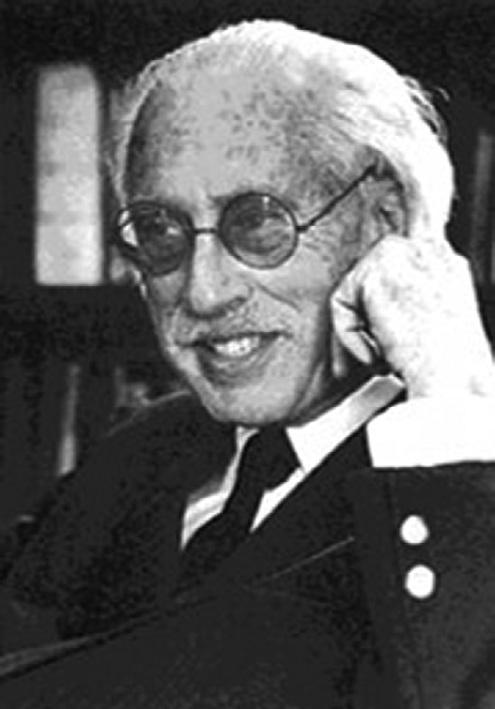CHAPTER1 Introduction
1.1Briefhistory
Theword glass isderivedfromalate-Latinterm glæsum usedtorefertoa lustrousandtransparentmaterial.Otherwordsoftenusedtorefertoglassy substancesare vitreous, originatingfromtheLatinword vitrum (¼transparent orclear),and amorphous,originatingfromGreek amorphe (¼withoutformor shape).Near-transparency,luster,orshine,andinparticular,itsdurability whenexposedtotheelementsofnature,wereprobablythemostsignificant propertiesofglassrecognizedbyearlycivilizations.Glazedstonebeadsfrom Egyptdatebackto12,000BC.Severaloftheartifactsunearthedfromthe tombsofthepharaohsexhibitexcellentglassinlayworkinavarietyof colors.Asindependentobjects,glasswareperhapsexistedforroughly 5000–6000years.Thetechnologyofglasswindows,exploitingtheproperty ofopticaltransparency,haddevelopedaroundthebirthofChrist,andwas developedtonewheightsofartistrybytheChristianChurchduringthe MiddleAges.Manyofthesebeautifullystainedwindows,whichcanstill beviewedinanumberofchurchesovertheEuropeancontinent,show thedeepcommitmentofthechurchtopreservethehistoryofmankind andreligiousteachingsthroughthemediumofglass.
Manyoftheusesofglassinthemodern-dayworldcontinuetoexploit thetransparency,luster,anddurabilityofglass.Containers,windows,lighting,insulation,fiber,stemware,andotherhandcraftedartobjectsaretypical ofthesetraditionaluses.Atthispoint,itisworthnotingthatforamaterialto beusedinaproductitmusthavecertaindesirablepropertiesthatdetermine itsuse.Inourlaterdiscussions,itwillbecomeclearthatthepropertiesof transparency,luster,anddurabilityareneithersufficientnornecessarytodescribe “glass.”Similarly,being“amorphous”doesnothavethesamemeaningasbeing aglass.Throughtheapplicationofbasicsciencestothestudyofglass,newer propertiesofglasseshavebeendeveloped,andhence,newerproductshave beenconceived.
Asmaybeexpected,muchofglasssciencedevelopedbasedonmajor commercialusesofglass.Morethan95%ofthecommercialtonnageofglass consistsofoxidecompositions.Byfarthelargestpercentageoftheseis
silica-based.Thisincludesbothcommodityglassproductsandhighlyspecializedapplicationsofglass,suchasinmicroelectronicpackaging,where theannualvolumeofsalemaybelowbutglassisakey“value-adding”component,thatis,theapplicationofglassiseitheracriticalcomponentor enhancesthevalueoftheassemblyaftertheincorporatingprocess.Itis notsurprisingthatwhentheterm“glass”isusedinscientificconversation, oxideglassesareusuallyimplied.Overthepastfewdecades,however,a greatmanystudiesofnonoxideglasseshavebeentriggeredbythepossibility ofsomeexoticusesofglassinthefieldsofhealthcareandinformationtechnology.Itiswell,therefore,toreviewourthoughtsonthevariousfamiliesof glasses,theircompositions,andtheirusesbeforewedelveintothedetailed scienceofglass.Inorganicglassfamiliesandtheircompositionranges developedthroughthe1970shavebeenextensivelydiscussedbyKreidl [1],Rawson [2],andVogel [3].
1.2Glassfamiliesofinterest
Table1.1 summarizesthechemicalcompositionofseveralcommoncommerciallyavailableinorganicglassproducts.Alloftheglasseslistedhereare silica-based.Manyofthesearereclassifiedin Table1.2 intofivemajorcompositionfamiliesshowingthekeypropertiesresponsibleforthecommercial interest.
Onemaynotethat,besidessilica,othermajorconstituents(amountgenerally greaterthan 3%)arealkalioxides,alkalineearthoxides,alumina,boricoxide, andleadoxide. Manyofthesameoxidesmayalsobepresentasminorconstituents.Compoundssuchasarsenicoxide,tinoxide,andcolorantsare oftenintentionallyaddedintraceamounts(lessthan 0.3%).Notshown arethepresenceoftraceimpuritiessuchasironoxideandhydroxyl,which arecommoncontaminantsintherawmaterialsusedintheglassmeltingprocess.Thereasonsformanyoftheseadditionsofdifferentcomponentswill becomeclearaswecontinue.Inmorerecentyears,theuseoftoxiccompoundssuchasleadoxideandarsenichascomeunderpressureduetoconcernsoverworkersafetyandenvironmentalprotection.Severalofthe variousglassfamiliesarediscussedbelow.
1.3Vitreoussilica
Vitreoussilicaisthemostrefractoryglassincommercialusage.Inadditionto itsabilitytowithstandexceptionallyhightemperatures,ithasahighresistancetochemicalcorrosion(particularlytoacids),averylowelectrical
Table1.1 Commercialglasscompositions(wt%oxides)
Table1.2 Oxideglassfamilies,keyphysicalproperties,andapplications
PropertySilicaSodalimesilicateBorosilicatePb-silicateborateAluminosilicate
ChemicaldurabilityVvvgoodGoodVgoodGoodVvvgood
ElectricalconductivityVvvlowLowLowVlowV – vvvlow
Workingrange Long –
UV -transparencyHigh
Refractiveindex High –
Elasticmodulus HighHigh
CostHighVlowMediumLowMedium
ApplicationsFurnacetubes, cruciblesforSi melting,UV windows
Container,flat, incandescent/ fluorescentlamps
Chemicallabware, pharmaceutical/ cosmeticsware,auto headlamps “Crystal”ware,art/ intricateshapes, sealingglasses Halogenlamp, fiber-reinforced plastics
conductivity,averylow( 5.5 10 7/°C)coefficientofthermalexpansion (CTE),andgoodultraviolet(UV)transparency.However,becauseofthe highcostofmanufacture,theusesofvitreoussilicaaremostlylimitedtoastronomicalmirrors,opticalfibers,cruciblesformeltinghigh-puritysilicon,and high-efficacylampenvelopes.Inonetechnique,theglassisobtainedbymeltinghigh-purityquartzcrystalsorbeneficiatedsandattemperaturesinexcess of2000°C.Inasecondtechnique,SiCl4 issprayedintoanoxy-hydrogen flameorwatervapor-freeoxygenplasma,reactingtoformSiO2 vapors, whichdepositonasubstrateandaresubsequentlyconsolidatedat 1800°C.
1.4Sodalimesilicateglass
Sodalimesilicateglassisthemostwidelyusedofallcommercialglasses. Mostbeveragecontainers,glasswindows,andincandescentandfluorescentlampenvelopesaremadefromsoda limesilicateowingtoitslowcost, goodchemicaldurability,andhighopticaltransmissioninthevisible region.BecauseofitsrelativelyhighCTE( 95 10 7/ °C),itisprone tothermalshockfailure,andthispreventsitsuseinanumberofapplications.Large-scalecontinuousmeltingofinexpensivebatchmaterials suchassodaash(Na2CO3),limestone(CaCO 3),andsand(SiO2)at 1400 –1500°Cmakesitpossibletoformtheproductsinexpensivelyand withhighthroughput.
1.5Borosilicateglass
Smallamountsofalkaliaddedtosilicaandboronoxideyieldafamilyof glassescommonlyutilizedfortheirlowthermalexpansioncoefficient ( 50 10 7/°C)andespeciallyhighresistancetochemicalattack.Laboratoryglassware,pharmaceuticalglassware,householdcookware,and automobileheadlampsareprimeexamplesofborosilicateglassusage. AmoreimportantapplicationistheuseofaTypeIborosilicateglasscartridgetocontainepinephrineinautoinjectordevicesforemergencyantidote topreventanaphylacticshockfromsevereallergiestobeestings,peanuts, andshellfoods,whichotherwisecouldpotentiallyleadtodeath.Theglass cartridgeischemicallystrengthenedtoreduceglassfractureprobabilitydue toappliedforceduringemergencyadministration.Borosilicateglassescanbe madecommerciallyinamannersimilartosodalimeglassesbutrequire highertemperaturesformelting( 1550–1650°C).ThehighermeltingtemperaturesandhighercostofB2O3 rawmaterialsmakeborosilicateglasses muchlesscompetitivecomparedtosodalimesilicateforcommonproducts.
1.6Leadsilicateglass
ThisfamilyofglassescontainsPbOandSiO2 astheprincipalcomponents, withsmallamountsofsodaorpotash.Theseglassesareutilizedfortheirhigh degreeofbrilliance(asstemwareorthemisleadinglynamedlead“crystal”), largeworkingrange(usefultomakeartobjectsandintricateshapeswithout theneedtoreheattheglass),andahighelectricalresistivity(e.g.,forelectrical feedthroughcomponents).PbOadditionsincreasethefluidityofglassandits wettabilitytooxideceramics.Hence,highleadborosilicateglasses(generally withoutanyalkaliadditions)areusedextensivelyinmicroelectronics(e.g.,for conductor,resistor,anddielectricpastes).Becauseofthetoxicityoflead, alternateformulationsforavarietyofproductsarebeingexplored.
1.7Aluminosilicateglass
Theelectricalresistanceofthealkali-freealkalineearthaluminosilicates oftenapproachesthatofvitreoussilica.Themostimportant21st-century applicationofthealkali-freealuminosilicatesisinliquidcrystaldisplayflat thinglasssheets.Manyoftheglassesareintermediatesbetweenthesoda limesilicateandvitreoussilicaforrefractorinessandthermalexpansion ( 30–50 10 7/°C).Anothercommercialuseofthesecharacteristicsis inthehigh-efficacylampsinvolvingtungsten-halogencycle(forinstance, thelampinsideanautomobilehalogenheadlamp)wheretheglasscanbe sealeddirectlytomolybdenumelectricalleads.Aluminosilicatesgenerally havehighvaluesofelasticmoduliandahighresistancetochemicalcorrosion.Compositionscommonlyreferredtoas“E-glass”and“S-glass”are usedastheload-bearingfibercomponentinfiber-reinforcedplastics.
Alkali-containingaluminosilicateglassesformthebasisforanumberof ultrahighstrengthglassproductswherethestrengtheningisachievedchemically usinganionexchangeprocess.Throughtheionexchangeprocess,acompressivestresslayerofaround1GPacanbedevelopedattheglasssurfacetoprotect againsttheintroductionandpropagationofdamage.Chemicallystrengthened aluminosilicateglassesarecommonlyusedasaircraftwindshieldsandasthin displaycoversforsmartphonesandotherpersonalelectronicdevices.
1.8Bioactiveglasses
Bioactiveglasses,forexample,glassesthatstimulatesomedesiredeffectin thehumanbody,wereoriginallydiscoveredinthe1960s.Bioactiveglasses
includeavarietyofsilicateandboratecompositionsthataredesignedtobe surfacereactivewhenimplantedinthebody [4].Thesurfacereactioncontributestheneededchemicalstostimulatehealingofhardorsofttissuesin thebody.Forexample,bioactiveglassesarenowusedtopromoteregenerationofbonetissueorthehealingoffleshwounds.Bioactiveglasseswillbe coveredindetailin Section23.8.
1.9Othersilica-basedoxideglasses
Manyotherfamiliesofsilica-basedglassesexist,includingopticalglassesused inopticalcomponentsanddevices,suchasophthalmics.Theinclusionof BaO,ZnO,La2O3,Nd2O3,orotheroxides,oftenasmajorconstituents, insodalimesilicate,leadsilicate,orborosilicateglassesyieldscompositions withusefulrefractiveindexandopticaldispersionproperties.
1.10Othernonsilica-basedoxideglasses
Oxideglassesnothavingsilicaasaprincipalcomponenthavesignificantly lesscommercialusage.B2O3-basedandP2O5-basedglassesarereadily attackedbywater.However,theirstudieshavebeenextremelyimportant towardenhancingourunderstandingofglassstructure.Somenonsilicate oxideglassesthathavecommercialinterestincludethealkalineearthaluminophosphates(forlaserhosting),boroaluminates(e.g.,“cabal”glasseswith electricalresistivitiesexceedingthatofsilica),alkalineearthaluminates(asa high-temperaturesealantandinfrared(IR)-transmittingglass),low-melting temperatureV2O5-basedglasses,andbioactiveB2O3-basedglassesforsoft tissuerepair.Manyoftheseglasseshaveverylowliquidustemperatures andarequitefluidcomparedtosilicateglasses.Hence,someoftheseglasses havefounduseinsealingofelectroniccomponents.Moreover,theespeciallyhighrefractiveindexoftelluriteglasses(inexcessof2.0)makesthem usefulinopticalsystems.
1.11Halideglasses
Becauseofhighsolubilityinwater,simplehalideglassessuchasBeF2, ZnCl2,andtheirmixtureswithalkalihalideshavelittlecommercialinterest despitethefactthattheirreadyglassformabilityhasbeenknownsincethe 1920s.Oftheknownhalideglasses,thosebasedentirelyonheavymetal inorganicfluorideshaveattractedthemostattentionduringthe1980s.It
hasbeenshownthatthetheoreticalattenuationintheseheavymetalfluoride glasses(HMFGs)canbeaslittleas10 3 dB/kmataroundthe3.5 μmwavelength.[Note:1dB ¼ 4.343ln(I/I0)where I0 and I aretheincidentand theexitingintensities,respectively.]Fora6000kmpropagationdistance,a lightsignalwouldsuffera6dBloss,andso,aquarteroftheoriginalintensity wouldstillbetransmitted.ThisindicatesthepossibilityofutilizingHMFGs forrepeaterless,continuousglassfibercabletocarrytranscontinentalor transoceanictelecommunications.Suchrepeaterlesscommunicationswould notbepossibleinoxideglasses,forinstance,insilicaglasstheattenuation minimumisshowntobenotlessthanabout0.15dB/km(at1.55 μm wavelength).
ThemoststudiedcompositionintheHMFGfamilyisthe“ZBLA”glass, whichcomprises57ZrF4 36BaF2 4LaF3 3AlF3 (mol%).Improvementshave beensoughtbychangingvariousconstituentsorbysubstituting,for instance,LaF3 byYF3 (the“ZBYA”glass)orbyaddingvaryingamounts ofotherconstituentssuchasfluorides,chlorides,andevensmallconcentrationsofoxides.Inalmostallcases,thestartingrawmaterials(generallyfluorides)musthavebetterthan5–6N(99.999%–99.9999%)purity.Theyare meltedinnonreactivecruciblestypicallymadeofplatinumorvitreouscarbonat800–1000°C.Areactiveatmosphere,suchasCCl4,SF6,orNF3,is maintainedduringthemeltingtoremoveoxygenandOH impurities whichotherwisewoulddegradethetransmissionpropertiestothepoint ofrenderingtheglassuseless.
TheHMFglasses,ingeneral,areextremelypronetocrystallization.Asa result,despite30yearsofintenseresearch,researchersareyettoreportglasses betterthan 0.2dB/kmloss.Becausetheseglassescanalsobereadily attackedbywater,theirpracticalityintelecommunicationtechnologyrelativetothatofthevitreoussilicafibersisnolongeraviability.Itislikely thattheapplicationofHMFGswillbelimitedtonear-tomid-IRtransmittingshort-haulsensors.
1.12Amorphoussemiconductors
ElementssuchasSi,Ge,P,As,compoundssuchasCdGexAs2 (x ¼ 0to1.2,a familyAIIBIVCV 2 called tetrahedralglasses)andSi1 xHx (where x ¼ 0.1–0.2), andmixturesofSi,Ge,As,Sb,etc.,withS,Se,andTe(chalcogen-based) retaintheirsemiconductingbehavior(observedinthecrystallinestate)even inthenoncrystallineform.Itwasdiscoveredin1960sthatmanyofthese noncrystallinematerialsdisplayedswitchingbetweenhighandlowelectrical
conductivitystates(whileremainingsemiconducting),potentiallymaking themthebestpossiblechoiceforcomputermemory [5].Theenthusiasm decayedconsiderablyafteritwasrealizedthattheswitchingoccurredasa resultoftransitionbetweenlocalizedmeltingandtheonsetofcrystallization, aphenomenonthatcouldnotbefullycontrolled.Theswitchingcouldbe carriedoutopticallyusingshortlaserpulses.Devicesbasedonelectricaland opticalpulseswitchingbehaviorareincommercialproductionforcomputer memories.Amorphoussemiconductorsarealsousedinphotovoltaics, enablingsolarcelltechnologywithlowercostcomparedtocrystallinesilicon (c-Si).Amorphoussilicon(a-Si)canbeproducedmoreinexpensivelyinthe formofthinfilmsbyvapordepositiononcoldsubstrates. (Usefulabbreviations are“a-”,“g-“,and“c-“fortheamorphous,glassy,andthecrystallinestates,respectively.) Thehydrogenationof a-Si(byglowdischargeplasmadecomposition ofSiH4 silane)apparentlycleansupthe“poisoningdefectsites”in a-Siand, thus,produces a-Si1 xHx (x ¼ 0.1–0.2),whichisamoreefficientphotoreceptorforuseinthesolarcells.Asindicatedin Section2.1,amorphoussolids suchas a-Siareexcludedfrombeingclassifiedasglasses.
1.13Chalcogenideandchalcohalideglasses
Glassesobtainedbymeltingchalcogenelements(group16:S,Se,andTe) withoneormoreofgroups15and14elementsarecalledchalcogenide glasses.Compositionsmodifiedbyaddinghalogensarecalled “chalcohalides.”Theprimaryinterestintheseglassescomesfromtheirsemiconducting(switching)behavior,photoconductivity,andIR-transmitting properties.Thephotoconductivitypropertyisutilizedinxerography (photocopying).Interesthasalsobeenhighinthemorerecentyearsupon therecognitionthat,althoughtheseglassesgenerallyappeargray/blackand areopaqueinordinaryvisiblelight,theybegintotransmitfromnear-IRto asfarasthe18–20 μmwavelengths.Thisthenmakesthemapotentialfiber materialcandidatefortransportingCO2 laserwavelength(10.6 μm)insuch applicationsaslaser-assistedmicrosurgery.Chalcogenideglassfiberscould alsobeusedasfiberamplifiersbasedonstimulatedRamanscatteringand theirhighopticalnonlinearityandwiderangeoftunability.Fiberamplifiers standtosharesomeoftherevolutionintelecommunicationofopticalsignals.Insteadofconvertinglighttoelectricity,amplifying,andthenconvertingbacktolightforonwardtransmission,theopticalfiberamplifiersamplify lightsignalsdirectly,therebyreducingconversionlosses.
Compoundsofsulfur,forinstance,withboron,alkalis,andsilver,have foundpotentialapplicationasfastionconductingglasses.Thecompound B2S3 isananalogofB2O3 wheretheoxygenhasbeenreplacedbysulfur. Asaresult,anentiregroupofoxygen-free“thioborate”glassesbasedon B2S3 astheprimaryglassconstituentisnowbeingdeveloped [6]
Likethehalides,thechalcogenidesalsorequireO2-andOH-freemeltingconditionstoassuregoodtransmissionbehavior.Rawmaterials(pure elements)mustbedistilledorsublimedtoincreasepuritylevelto6N.Glasses aregenerallymeltedinevacuatedsilicaglassampoulesat800–1000°Cinside arockingfurnacetoachieveahighdegreeofhomogeneity.Chalcogenide glassesaremuchmoreresistanttowaterattackcomparedtohalideglasses. Forthisreason,itispossiblethatchalcogenides,ratherthanthehalides, maybethematerialofchoiceformid-IRsensorapplications.
1.14Metallicglasses
Metallicglasses(sometimesalsoreferredtoasglassymetalsor,inappropriately,asamorphousmetals)arenoncrystallinematerialscomposedofeither puremetalsorcombinationsofmetalsandmetalloids.Theyaremetalsinthe sensethattheirelectrical,magnetic,andopticalpropertiesaretypicalof metals.(However,theirelectricalresistivityoftendecreaseswithtemperature.)Theyareneithersemiconductorsnoraretheyopticallytransparent. AnexampleofaglassymetalisFe40Ni40P14B6 soldunderthetrademark Metglas.
Theseglassesareoftenmadeintheformofthintapesorfibersusingvery high-speedquenchingtechniques,forinstance,bypassingliquidstreams betweenhighthermaldiffusivityrollersorbymeltspinning.Thecooling ratesaregenerallyintheorderof105–108 °C/s.Inpulsedlaserquenching, a 100nmthinsurfacelayerofametalismeltedbyanincidentpicosecond pulsedlaserbeam.Duringthe“off”portionofthepulse,thelargecoldsubstratecausesthemeltedlayertocoolatratesexceeding1012 °C/s.Amorphizationofsomemetalsisalsopossiblebymechanicalmethodssuchas ballmilling.Aswith a-Si,therearelingeringquestionsastowhethersome ofthesesubstancesshouldbecalled amorphousmetals asopposedto metallic glasses [7].
Becausemetallicglassesarereadilyproducedasthinribbons,theprimary commercialuseofamorphousFe-basedferromagnetsisinflexiblemagnetic shieldingandpowertransformercorelaminations.Thesematerialshavevery lowmagnetichysteresiscurvelosses.Inaddition,theyhaveaboutthree
timeshigherelectricalresistivitythantheircrystallinecounterparts.Asa result,theiruseaspowertransformercorelaminationscanleadtoasmuch as30%powersavings.Metallicglasseshaveextremelyhighmechanical strengths,approachingtheoreticalvalues.Hence,asfiber-reinforcedcomposites,theycouldbecandidatematerialsforhighstrength-to-weightratio applications(suchashigh-speedaircraft,spacevehicles,etc.).Therehasbeen someinterestintheirsuperconductingpropertiesforapplicationsinthermonuclearfusionsuperconductingmagnetictorus,primarilybecausetheir amorphousnaturemakesthemlesssusceptibletoradiationdamage.However,thesuperconductingtransitiontemperaturesarequitelow(about9K). Becauseoftheiruniquemagnetostrictivecharacteristics,theyarepotential candidatesforapplicationinremotesensing,productlabeling,andelectromagneticshielding.Morerecently,newcompositionswithimprovedglassformingabilityhavebeendeveloped,enablingtheformationof bulkmetallic glasses(BMGs) withthree-dimensional(3D)morphologies [8].
1.15Glass-likecarbon
Controlledcarbonizationofwater-dispersedcelluloseorofslow-agedthermosettingresinssuchasfurfurylalcoholandphenolformaldehydeattemperaturesbetween1200°Cand3000°Cyieldsanongraphitizableblackmass whichiscalled glass-likecarbon andsoldundertradenamessuchasCellulose Carbon,GlassyCarbon,andVitreousCarbon.Inadditiontotheproperties commontocarbon,suchashighelectricalandthermalconductivities,glasslikecarbonshavehighstrength,highhardness,highresistancetooxidation andreactionwithchemicalsevenathightemperatures,andverylowpermeabilitytogasesdespitethepresenceoffinelydistributedporosity [9]. Becauseofthemanydesirablephysicalproperties,glass-likecarbonisused mostlyasacruciblematerialforhigh-puritymeltingandashightemperaturemandrelsandjigs.Inreality,theonlyresemblanceglass-like carbonhastoglassisitsshiny,conchoidalsurfaceswhenbroken.Itisbest classifiedasanagranular,macro-isotropic,microcrystallinesolidand,hence, willnotbeincludedinourdiscussionshenceforth.
1.16Mixedanionglasses
Asthenameimplies,thesearehybridfamilieswheretheoxygenis substitutedinpartbyhalogen(usuallyFandCl),N,orC.Manyarepotentiallyhigh-performancematerialsbutremainedinresearchlaboratoriesso
far.Stableglassescontainingsmallamountsofthesubstituent(generally 1%–4%)maybepreparedbymeltingtogetherhalides,nitrides,orcarbides withoxidesovernarrowrangeofcompositions.Themeltviscositiesandthe electricalresistivitiesoftheoxyhalidesaregenerallylowerthanthoseofthe oxides.Cautionmust,however,beexercisedwhenusinghalogencontainingglassesinpicoelectronicpackagingbecauseofthepotentialtoformcorrosiveHFandHClfromreactionwithatmosphericwateroverlongperiods. Bulkoxynitrideglassescontainingsilicates,phosphates,and5–18at.%nitrogencanbepreparedbyammoniatingtheoxidemelts.Oxynitrideglassescan alsobeprepared [10] bythedirectmeltingofcommonglass-makingoxides alongwithAlNorSi3N4 underN2/Aratmosphereat1500–1800°C.Oxycarbideglasseswithhigh(20%–40%)carboncontentcanonlybeprepared currentlyintheformofthinspecimenformsbyasol-gelroute [11].These glassesmay,infact,benanoscalecompositesofcarbonandoxideglasses givingthemablackappearance.Nitridingandcarbidingofglassesenhances thehigh-temperaturemechanicalandrheologicalpropertiesgreatly;hence, theseareofconsiderablecommercialinterest.
1.17Metal-organicframeworkglasses
Thenewestfamilyofglass-formingchemistrycomesfromahybridorganicinorganicclassofmaterialknownasmetal-organicframeworks,which consistofmetalcationslinkedbyorganicligandmolecules.Intheircrystallineform,metal-organicframeworksareknownfortheirhighdegreeof porosity.Veryrecently,ithasbeendiscoveredthatsomeofthesemetalorganicframeworkcrystalscanbemeltedintoastableliquidandthen quenchedintotheglassystate [12,13].Whenthishappens,theporouscrystalcollapsesintoaporosity-freeglasshavingsignificantlyhigherdensitythan theparentcrystal.Whilethisfieldofmetal-organicframeworkglassesisstill initsinfancy,theyalreadyshowaninterestingcombinationofoptical, mechanical,andchemicalproperties,whichmayleadtopotentialfuture applications.
1.18Abriefnoteonglassesfoundinnature
Despitethevariouserosionmechanisms,thereisquiteanabundanceofnaturalglassesontheearth [14].Obsidian,whichisvolcanicinorigin,isperhaps themostfamiliarexample.ThechemicalcompositionofatypicalCalifornia
obsidianis75SiO2 13.5Al2O3 1.6FeO/Fe2O3 1.4CaO 4.3Na2O 4.5K2O 0.7MnO(wt%),whichmakestheglassjustanothergoodmemberofthe alkalialuminosilicatefamily.Mostobsidiansaregenerallylessthan65million yearsoldbutwouldtendtodevitrify(i.e.,crystallize)overlongerperiods. Obsidiansarenotdryglasses:theymaycontainasmuchas 1%water.This islikelythereasonfortheirfoamingbehaviorwhenheated.
Examplesofotherglassesfoundontheeartharefulgurites,whichare madebyfusionwhenlightningstrikessoil,glassesofmeteoriticorigin, impactglasses(impactites)whichmighthavebeenformedeitherduringa meteoriticimpacteventby“shocktransformation”(diaplecticglasses)or byfusionoflocalmineralsandrocksduetoabsorbedheat,andtektites [15].Nottobeconfusedwiththesearethemanmadeglassesfromindustrial wastes(fragmentsofglasscontainers,sheets,highwaybuildingmaterials, reflectorbeadsfromroadsigns,etc.),andfromnuclearexplosions.
Scientifically,themostintriguingandhotlydebatednaturalglassis thetektite.Therearemanytektite-strewnfields:themorestudiedones aretheAustralasiantektitesonlandandtheassociatedmicrotektites (indeep-seadepositsintheIndianOcean,PhilippineSea,andWestern EquatorialPacificOcean),themoldavitesofCentralEurope,andtheLibyan Desertglass(fromWesternEgypt).TheAustralasiantektitesareblackto darkbrownincolor,typically75SiO2 13Al2O3 4FeO/Fe2O3 3.5MgO/ CaO 4Na2O/K2O 0.7TiO2 (wt%),andhavebeendatedtoberoughly 700,000yearsoldusing 40 K–40Armethod.Specimensareliquidsplash forms(spheres,teardrops,dumbbells,andbuttons)andaregenerally1–2cm indimensions,although,aspecimenaslargeas10–20cmandweighing 12.8kghasalsobeenfound.Estimatesofthetotalquantitiesofmicrotektitesaloneareashighasabout1010 metrictons.Themicrotektitesappear cleartolightyellow/brownincolorandaregenerallylessthan1mm indiameter.Theseglassesareremarkablyveryhomogeneous [16] Aftercalculatingpossibletrajectories,O’KeefeconcludedthattheAustralasiantektiteshadtobeoflunar volcanicoriginasopposedtobeing theresultofaterrestrialmeteoriticimpactinordertobeashomogeneous [15].Themoldavitesarepaleyellowtoyellowishgreen,andtypicallyhavingacompositionabout75– 80SiO 2 9 –12Al2O3 1– 3FeO/ Fe2O3 0.3Na2O 3.5K 2O 2– 3CaO(wt%).Theyareestimatedtobe 15millionyearsoldandareacknowledgedtobefusedejectaassociated withameteoriteimpactwhichformedtheRiescraterinGermany. TheLibyanDesertglassspecimensarepaleyellowtoyellowishgreen, contain 97%SiO2,withnearlyalloftheir0.5%ironasFe2O3,anddated
tobeabout28millionyearsold.Estimatesofthetotalmassasitexists todayrangeuptoabout1500tons,andspecimensaslargeas7.5kghave beenrecovered.Therehavebeensuggestionsthattheglasshasbeen formedbyasol-gelprocess,sinceanassociatedmeteoriticimpactcrater siteisyettobefound.
Alsostudiedandanalyzedextensively(byreputablelaboratoriesaround theglobe)arethelunarglassesreturnedfromtheApolloexpeditions.Irregularfragments,spherules,teardrops,anddumbbellsofvarioussizes,aslittleas afewmicrons,havebeenfound.Glassesareknowntobebothoflunar volcanicandmeteoriticimpactorigin.ThecompositionsofsomeoftheparticlesreturnedfromtheApollo12expeditionhavebeenfound [17] tobe 38–50SiO2 10–27Al2O3 4–20FeO 0.4Na2O/K2O 9–14CaO 6–13MgO 2–4TiO2 (wt%),althoughtherewereregionsofinhomogeneitieshavingas muchas89%SiO2.NotethehighFeOandthelowalkali.Aspecimenof knownlunaroriginhasbeendiscoveredinAntarctica [18].
Naturalglassesarerelicsofthepast;theybearthemarksoftime.They (naturally)presentopportunitiesforstudyingchemicaldurabilityasafunctionofglasscomposition.Severalofthecompositionshaveshownremarkableresistancetoweathering.Perhaps,asidefromlookingfortheoriginof theearthandtheuniverse,someimportantlessonslearnedfromthestudyof naturalglassesareintheareaofwasteimmobilizationtohelpuscleanupour preciousplanet.
1.19Glassgreats:AntonioNeriandNorbertJ.Kreidl
AntonioNeri(1576–1614)wasaRomanCatholicpriestfromFlorence whopublishedthefirstbookonglassmakingin1612,neartheendofthe Renaissance.Neri’smonograph, L’ArteVetraria (or TheArtofGlass),became thestandardreferenceforglassmakersforthenext200years(Fig.1.1).Here, NeridisclosedmanyofthetechniquesofVenetianglassmaking,whichhad previouslybeenkeptascloselyheldsecrets.Inthe133chapterswrittenby Neri,heguidedthereaderthroughexperimentsmakingdifferenttypesof glass,includingmanytypesofcoloredglassforwhichhehadanespecial affection.Neri’sbookdemonstratedhistrueloveforglass,callingitboth “noble”anda“fruitoftheartoffire.”
NorbertJ.Kreidl(1904–94,see Fig.1.2)wasoneofthemoreadmired membersofthemodernglassprofessionalcommunity.Kreidlwasbornin Viennain1904andcompletedhisPhDinphysicsin1927fromtheUniversityofVienna.FollowinghisPhD,Kreidlworkedintheglassindustry
Fig.1.1 Coverofonevolumeof L’ArteVetraria (or TheArtofGlass)byAntonioNeri, publishedin1612.
Fig.1.2 NorbertJ.Kreidl(1904–94),oneofthemostinfluentialfoundersofmodern glassscience. Source:Am.Ceram.Soc.Bull.73(9)(1994).
inCzechoslovakiafor10years.FleeingHitler’sreignofterror,heandhis youngwife,Melanie,cametotheUnitedStatesin1938withonly “13dollarsandababy.”NorbertfoundateachingjobatThePennsylvania StateUniversity.From1943to1966,KreidlworkedatBauschandLombin Rochester,NewYork,becomingdirectorofmaterialsresearchanddevelopment.AfterretiringfromBauschandLomb,Kreidlpursuedhispassionfor teaching,firstatRutgersUniversityandthenatUniversityofMissouri–Rolla.Kreidlisknownasoneoftheoriginalgurusofglassscience,having publishedextensivelyonglassstructure,properties,andtechnology.Heis theauthororcoauthorofseveralbooksonglassscience,including Glass: ScienceandTechnology [1],coauthoredwithD.R.Uhlmann.Alectureaward forbestgraduateresearchinglassispresentedinhishonorbytheAmerican CeramicSocietyannually.
Summary
Theword glass isderivedfromalate-Latinterm glæsum tomeanalustrous andtransparentmaterial.Glassysubstancesarealsocalled vitreous,originating fromLatinword vitrum (clear).Theword amorphous (fromGreek amorphe meaningwithoutshape)doesnothavethesamemeaningasbeinga glass. Thehistoryofglassasglazedstonebeadsgoesbackperhapsasmuchas 12,000years.Asindependentobjects,glasswarewasavailable 5000years ago.Themostimportanttechnologicaldevelopmentsinglass,suchasthe glasswindow,weresponsoredbytheChristianChurchduringthe MiddleAgesontheEuropeancontinent.
Althoughtransparency,luster,anddurabilityagainstelementsofnature areneithersufficientnornecessarytodescribeglass,theyremainsomeofthe keycharacteristicsofglassthatareimportantforlarge-scalecommercialization.Morethan95%ofthecommercialtonnageisoxideglasses,ofwhich thevastmajorityissilica-based.
Vitreoussilica,sodalimesilicate,borosilicate,leadsilicate,aluminosilicate,andopticalglassesaretheprimaryglassfamilies.Vitreoussilicaisthe basisofmuchoftheopticalfibersfortelecommunications.Mostoftheconsumerglasswaresuchasthearchitecturalwindows,beveragecontainers, householdlamps,fluorescentlamps,andtumblersaremadefromsodalime silicateglass.
Ofthenonoxideglasses,thoseofsignificantcommercialinterestare theHMFG,theamorphoussemiconductorandchalcogenidegroup,and metallicglasses.Ofthese,theamorphoussemiconductorsandthe
chalcogenidesformthebasisofminiaturizationofthecomputerasswitching andmemorydevices,solarcell(photovoltaics),andthexerographicprocess (photoconductivity).
Glassisalsofoundinnature.Themoreimportantandinterestingexamplesarevolcanicglass(obsidians),lunarglass,andtektites.
Glassiscurrentlythepreferredhostforthefixationofnuclearandnonnuclearhazardouswastetoprovidemankindanenvironmentallysaferplanet tolive.
Onlineresources
(1) CorningMuseumofGlassVideoSeries: https://www.cmog.org/ glassmaking/studio/video-series.
(2) CorningIncorporatedInspiredbyGlassVideoSeries: https://www. corning.com/worldwide/en/innovation/the-glass-age/inspiration/ inspired-by-glass-video-series.html
(3) CenterforResearch,TechnologyandEducationinVitreousMaterials (CeRTEV)YouTubeChannelfromEdgarZanotto: https://www. youtube.com/channel/UCvGLC2cszadfTXeLcyl_bVw
Exercise
(1) Namefourofthemajortechnologicalachievementsinglasswhich havehadthemostprofoundimpactonmankind.
(Ans:See Fig.23.1 in Chapter23.)
References
[1] N.J.Kreidl,Inorganicglass-formingsystems,in:D.R.Uhlmann,N.J.Kreidl(Eds.), Glass:Science&Technology,vol.1,AcademicPress,NewYork,1983,pp.107–300.
[2] H.Rawson,InorganicGlass-FormingSystems,AcademicPress,NewYork,1967.
[3] W.Vogel,ChemistryofGlass,AmericanCeramicSociety,1985.
[4] J.Jones,A.Clare(Eds.),Bio-Glasses:AnIntroduction,JohnWiley&Sons,2012.
[5] S.R.Ovshinsky,Phys.Rev.Lett.21(1968)1450.
[6] S.W.Martin,D.R.Bloyer,J.Am.Ceram.Soc.74(1991)1003.
[7] A.L.Greer,Science267(1995)1947.
[8] J.Schroers,Phys.Today66(2)(2013)32.
[9] T.Noda,M.Inagaki,S.Yamada,J.Non-Cryst.Solids1(1969)285.
[10] T.Das,Bull.Mater.Sci.23(2000)499.
[11] G.D.Soraru,G.D’andrea,R.Campostrini,F.Babonneau,G.Mariotto,J.Am.Ceram. Soc.78(1995)379.
[12] T.D.Bennett,Y.Yue,P.Li,A.Qiao,H.Tao,G.N.Greaves,T.Richards, G.I.Lampronti,S.A.Redfern,F.Blanc,O.K.Farha,J.Am.Chem.Soc.138(2016) 3484.
[13] A.Qiao,T.D.Bennett,H.Tao,A.Krajnc,G.Mali,C.M.Doherty,A.W.Thornton, J.C.Mauro,G.N.Greaves,Y.Yue,Sci.Adv.4(2018)eaao6827.
[14] L.D.Pye,J.G.O’Keefe,V.D.Frechette(Eds.),NaturalGlasses,NorthHollandPubl., 1984.
[15] J.G.O’Keefe,Tektites,TheUniversityofChicagoPress,1963.
[16] A.K.Varshneya,A.R.Cooper,J.Geophys.Res.74(1969)6845.
[17] C.H.Greene,L.D.Pye,H.J.Stevens,D.E.Rase,H.F.Kay,Proc.2ndLunarSci.Conf., vol.3,MITPress,Cambridge,MA,1971,p.2049.
[18] R.F.Fudali,M.Kreutzberger,G.Kurat,F.Brandstaetter,in:L.D.Pye,J.G.O’Keefe, V.D.Frechette(Eds.),NaturalGlasses,NorthHollandPubl.,1984,pp.383–396, inRef.[14].















